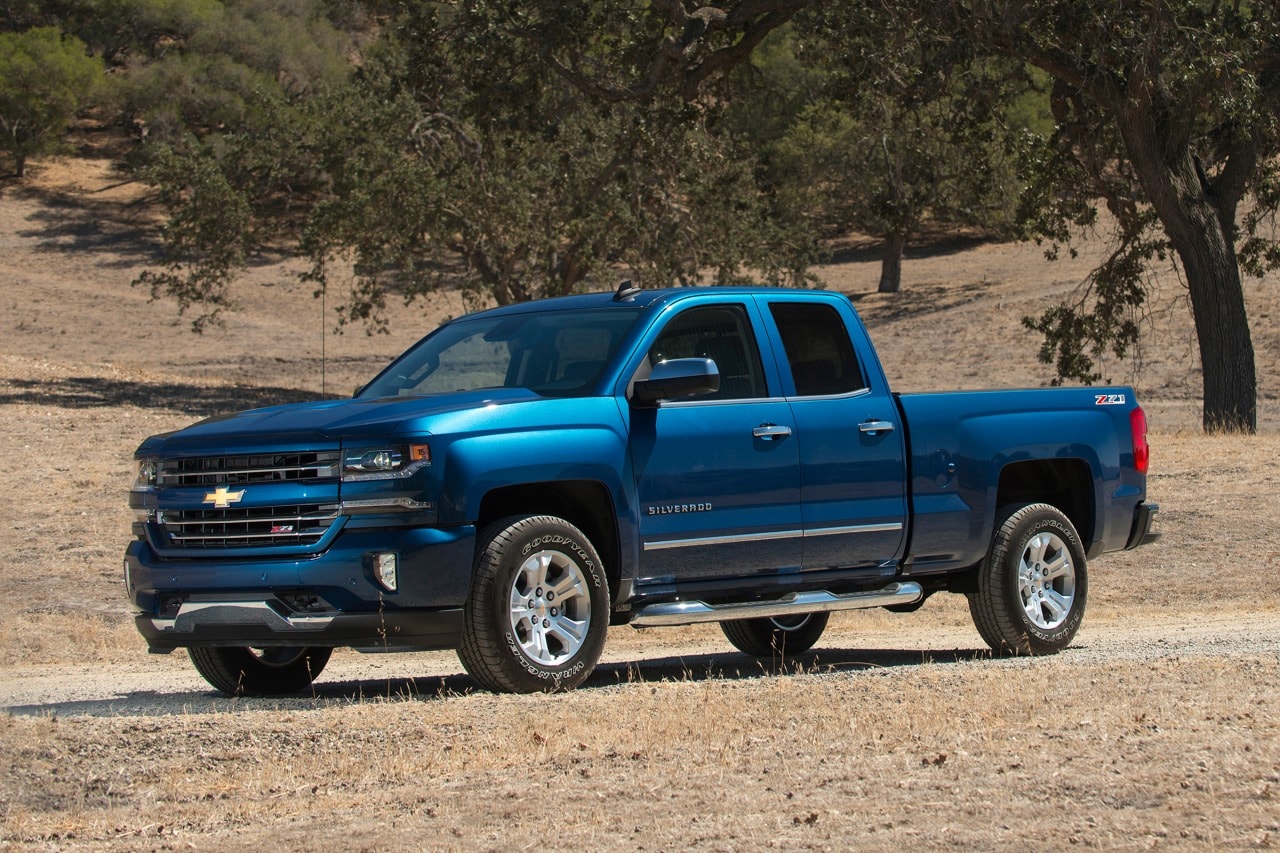Pickup trucks have long held a revered place in the hearts of automotive enthusiasts, weekend warriors, and hardworking professionals alike. These rugged vehicles blend utility, power, and versatility in ways that few other vehicle types can match.
But beyond just hauling and towing, pickups offer a unique appeal for DIY mechanics and hobbyists who enjoy rolling up their sleeves and getting hands-on with vehicle maintenance, repairs, and upgrades.
Whether you’re looking to swap out brakes over a Saturday afternoon or rebuild an engine during an extended shop session, understanding which pickups lend themselves best to quick weekend projects — and which demand more extensive work — is critical.
At the core of every pickup’s repairability is its design philosophy and engineering complexity. Older trucks and certain model lines were built with simplicity in mind, favoring easy access to key components, non-proprietary parts, and mechanical systems that don’t rely heavily on computers or complex electronics.
These trucks often reward their owners with satisfying weekend projects where common tasks can be completed with a wrench set, a jack, and a bit of patience. On the other hand, newer trucks or those with advanced engine technology, turbocharging, intricate emission controls, and extensive electronic integration often require specialized tools, diagnostic software, and longer shop stays.
These more modern or heavy-duty pickups may be less conducive to quick fixes, instead necessitating a full week or more of dedicated time in a professional garage. This article aims to shed light on five popular pickup models known for their fast and relatively simple weekend projects, as well as five trucks that tend to need a week or longer in the shop for more involved repairs or upgrades.
By contrasting these two categories, we’ll help enthusiasts and owners better understand which trucks might best suit their mechanical aptitude, time availability, and repair budget. Whether you’re a weekend wrenching newbie looking for your first project truck or an experienced mechanic weighing the tradeoffs of modern complexity versus old-school simplicity, this guide provides valuable insights into the repairability and time commitment required for some of the most iconic pickups on the market.
The pickups chosen for weekend projects generally come from generations where manufacturers prioritized straightforward mechanical layouts, fewer electronic dependencies, and the availability of parts and community support. These trucks include the classic Chevrolet Silverado 1500 from the late ’90s and early 2000s, known for its durable V8 engines and easy access to common service items, as well as the Ford F-150 models from the ’90s and early 2000s, which share a reputation for mechanical simplicity and vast aftermarket resources.
Toyota’s Tacoma from the mid-2000s and early 2010s also earns a spot on this list, thanks to its legendary reliability combined with user-friendly engineering. Dodge Ram 1500s from the mid-2000s, especially the Hemi variants, round out this group with their large engine bays and straightforward ignition and suspension systems. Finally, the 2010–2014 Ford F-150 with the “Coyote” 5.0L engine offers a newer but still approachable platform that balances modern performance with manageable service requirements.
Conversely, the pickups requiring week-long shop stays are typically models loaded with advanced engine technology, complex emissions controls, turbocharging, or diesel powertrains. The Ecoboost-powered F-150s from the mid to late 2010s, with their turbocharged V6 engines and integrated electronics, fall into this category due to the delicate and intricate nature of their powertrains.
Similarly, late-model Chevrolet Silverados and GMC Sierras with active fuel management and variable valve timing introduce mechanical and diagnostic challenges that extend repair times. Ram 1500s from the mid-2010s equipped with EcoDiesel engines represent a further complexity jump, requiring extensive specialized tools and knowledge.
Even the modern third-generation Toyota Tacoma, despite its reliability, includes tighter engine packaging and more advanced electronics that lengthen repairs. Lastly, heavy-duty Dodge Ram 2500 and 3500 trucks with the Cummins diesel engine are legendary for durability but require significant labor time for engine and fuel system repairs due to their large, heavy components.
By understanding the mechanical nuances and service demands of these trucks, owners and enthusiasts can better plan their repair schedules, decide on potential project vehicles, and weigh the cost and time implications of ownership. Whether you crave fast weekend upgrades or are prepared to commit to longer, more complex repairs, knowing the strengths and challenges of each truck is essential.
In the following sections, we’ll explore the five pickups most suited to fast weekend projects and the five that generally demand a full week in the shop — helping you pick the perfect truck for your wrenching style and needs.
Also Read: 5 SUVs With Factory-Installed Block Heaters and 5 Without Cold-Weather Prep
5 Pickups with the Fastest Weekend Projects

1. 1999–2006 Chevrolet Silverado 1500
The 1999 to 2006 Chevrolet Silverado 1500 stands out as one of the best trucks for quick, manageable weekend repairs and upgrades. This generation was engineered during a time when trucks were designed with a focus on mechanical simplicity and robustness, making it far easier to tackle repairs at home than with many modern trucks that are saturated with electronics and complex systems.
The Silverado’s 5.3L V8 engine, a favorite among enthusiasts, is known for its durability and relative simplicity, giving owners the confidence to replace parts like ignition coils, fuel injectors, or the alternator without calling in a professional. The layout under the hood is spacious, giving enough room to maneuver tools and access components without disassembling entire systems. This design philosophy naturally reduces the time and frustration associated with many common repairs.
When it comes to typical weekend projects, Silverado owners often find themselves performing maintenance and upgrades like brake replacements, intake manifold gasket swaps, and suspension refreshes. Brake jobs, a quintessential weekend project, can typically be completed within a few hours thanks to the accessible front wheel hubs and straightforward caliper design.
The intake manifold gasket, known to develop leaks in these years, is a task that many owners handle themselves, and the design of the engine makes the process less painful compared to more compact or electronically intertwined powertrains. Even replacing the fuel pump or fuel filter, which is frequently cited as a tricky repair on other trucks, is manageable here with simple tools and clear access points.
One of the design elements that helps the Silverado excel as a weekend project truck is its use of widely available and non-proprietary parts. Most of the bolts, fittings, and components conform to common sizes and standards, which means mechanics and DIYers don’t have to invest in specialized tools or spend time hunting down unique fasteners.
The wiring harnesses and sensors are kept relatively straightforward, minimizing the risk of accidentally triggering complicated electrical faults during repairs. Even more complicated tasks, like rebuilding a transfer case or swapping out the radiator, are made easier because the engine bay is uncluttered and components can be removed in logical sequences without disassembling unrelated parts.
Lastly, the Silverado benefits immensely from its massive user community and aftermarket support. Countless forums, YouTube tutorials, and service manuals provide step-by-step instructions tailored for weekend DIYers. From casual beginners to experienced mechanics, Silverado owners have access to a wealth of knowledge that cuts down troubleshooting and trial-and-error time.
The truck’s popularity also means replacement parts are not only plentiful but affordable, helping keep weekend projects economical. Whether you’re hunting down OEM parts at a salvage yard or ordering aftermarket performance upgrades, the Silverado’s ecosystem is highly supportive of quick turnaround projects, making it one of the best pickups to roll out of the driveway by Sunday night.
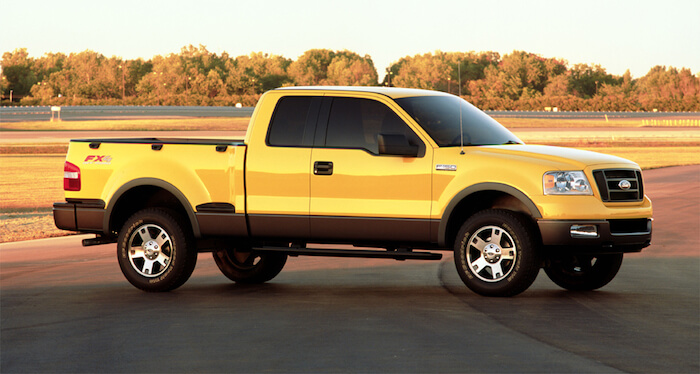
2. 1994–2004 Ford F-150 (9th/10th Generation)
The 1994–2004 Ford F-150 is often hailed as one of the best full-size trucks for those who love weekend mechanical work because it strikes an ideal balance between old-school mechanical systems and decent reliability. These trucks, especially those with the 4.9L inline-6 or 5.4L Triton V8, are famed for their bulletproof construction and mechanical simplicity.
Their engines and chassis are designed so that much of the routine maintenance and minor repairs do not require computer diagnostics or specialized tools. For anyone willing to roll up their sleeves, this truck offers a mechanical playground with generous engine bay clearance and a straightforward component layout.
Weekend projects frequently tackled on these trucks include coil pack replacements, fuel system servicing, brake jobs, and suspension component swaps. The modular V8 engines, while prone to coil pack issues, allow owners to replace ignition coils and spark plugs in well under half a day.
The fuel filters and pumps are similarly accessible, and replacing them is a relatively painless experience for home mechanics. Brake jobs on these trucks benefit from the well-known design of the front calipers and rotors, and the rear drums are easily serviced with basic hand tools. Suspension bushings and ball joints can be replaced over the course of a weekend, often improving both ride quality and handling.
The design of these F-150s supports straightforward maintenance and repairs. The vacuum lines, brake boosters, and engine sensors are logically grouped, making it easier to diagnose and fix leaks or failures. Many trucks from this generation have a solid service history because owners found it easy to keep them in good condition without heavy mechanic intervention.
The frame, body mounts, and drivetrain components are built with durability in mind but remain easy to access and replace, meaning even heavier jobs like steering box rebuilds or transfer case service can be completed without weeks in the shop.
The F-150’s huge fan base and online support community are some of the truck’s greatest assets. Sites like FordTruckEnthusiasts and F150Forum are brimming with detailed how-tos, project logs, and troubleshooting advice tailored specifically to this generation.
Because these trucks were produced in such large numbers and shared parts with other Ford models, owners enjoy ready access to both OEM and aftermarket parts at reasonable prices. For weekend warriors, the 1994–2004 F-150 offers the perfect mix of mechanical simplicity, part availability, and community knowledge, creating a recipe for many successful and satisfying home projects.
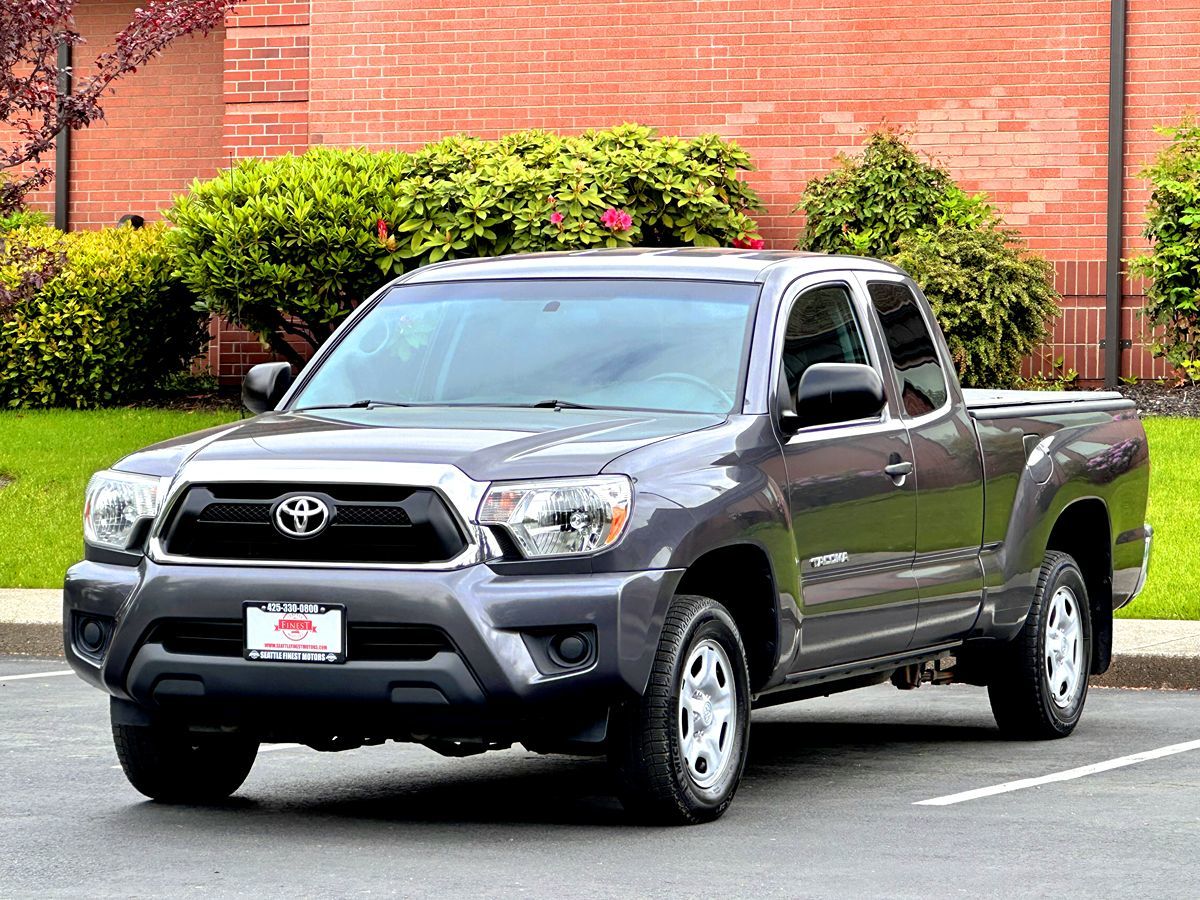
3. 2005–2015 Toyota Tacoma
The Toyota Tacoma from the 2005–2015 era is renowned not only for its bulletproof reliability but also for its exceptional serviceability, making it one of the most user-friendly pickups for weekend projects. Toyota’s engineering during this generation focused heavily on durability and modularity, with many parts designed to be easily swapped or serviced in the field.
The 4.0L V6 engine, in particular, is known for its straightforward design, which minimizes hidden components and allows mechanics to tackle repairs like timing chain replacement or thermostat swaps without complete engine disassembly. For DIY enthusiasts, this means a wide variety of repairs and upgrades are within reach without needing extensive mechanical experience.
Among the most common weekend projects for Tacoma owners are brake jobs, suspension upgrades, fluid changes, and simple engine maintenance tasks. Replacing brake pads and rotors, for example, typically takes just a few hours thanks to well-placed access points and non-proprietary hardware.
Many owners also take advantage of the Tacoma’s aftermarket scene to upgrade shocks, springs, or even swap in larger wheels and tires — all achievable in a weekend with basic tools and some mechanical know-how. More involved maintenance tasks, such as replacing the water pump or clutch slave cylinder on manual models, are well-documented and supported by plenty of how-to guides, making them accessible to intermediate-level DIYers.
The Tacoma’s design favors ease of access throughout its drivetrain and suspension systems. Its engine bay is uncluttered compared to many modern trucks, and components such as the alternator, serpentine belt, and air conditioning compressor are located for convenient serviceability. Wiring harnesses and sensors are strategically routed to minimize interference with routine maintenance.
This thoughtful layout translates into fewer hours spent removing unrelated parts to reach a failing component, making weekend repairs more predictable and less frustrating. It also encourages owners to tackle more ambitious upgrades like aftermarket exhaust installations or cold air intakes.
Finally, the Tacoma benefits greatly from a passionate and supportive owner community. Websites like TacomaWorld and countless Facebook groups offer deep wells of collective experience, including detailed repair guides, modification tutorials, and troubleshooting advice.
The strong aftermarket support, including high-quality OEM replacement parts and robust third-party options, means parts arrive quickly and are typically priced within reach for weekend projects. Whether you’re prepping your truck for the trail with a suspension lift or simply performing preventative maintenance, the 2005–2015 Tacoma remains one of the top pickups for fast, satisfying weekend wrenching.
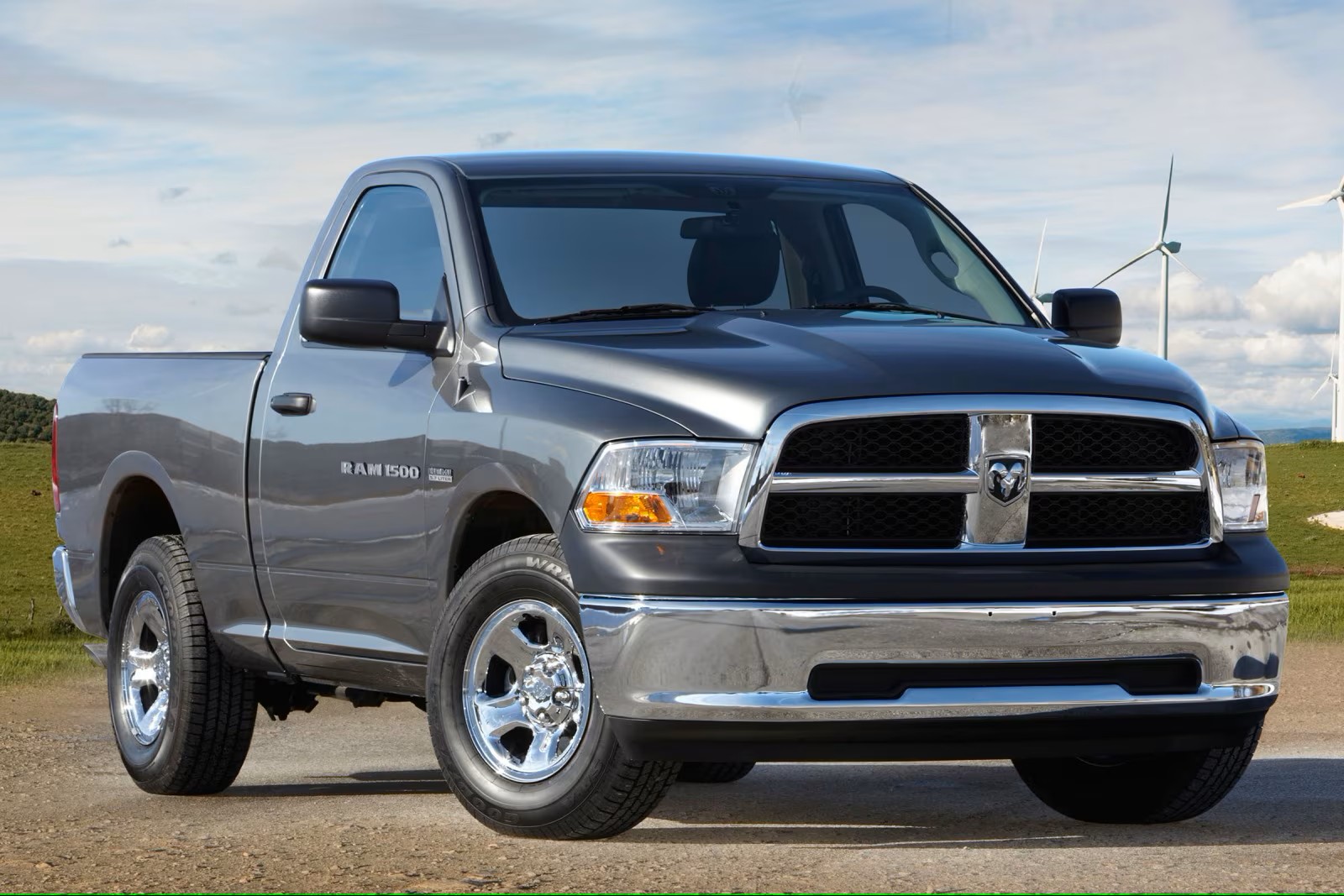
4. 2003–2008 Dodge Ram 1500 (Hemi Models)
The 2003–2008 Dodge Ram 1500, especially those with the 5.7L Hemi V8, is a popular choice for weekend mechanics seeking a powerful yet relatively straightforward truck to work on. While Dodge trucks of this era do come with some quirks, their large engine bays and generally uncomplicated mechanical systems make routine repairs and upgrades manageable within a weekend.
The Hemi engine itself is renowned for its muscle car heritage, and its straightforward V8 architecture provides plenty of room for swapping out ignition components, fuel injectors, and various bolt-on performance upgrades. Many owners appreciate the blend of power and repairability in these trucks.
Common weekend projects among Ram 1500 owners include ignition coil and spark plug replacements, throttle body cleaning, exhaust system upgrades, and suspension repairs. The ignition system on these trucks is a well-known weak point, but coil packs are easy to replace with standard hand tools and a lift or jack.
Brake caliper and rotor swaps are straightforward, with parts readily available from aftermarket and OEM sources. Upgrading the exhaust system, whether adding headers or a cat-back system, can also typically be completed in a day, giving both performance and sound improvements with minimal hassle.
A key aspect of the Ram’s weekend project appeal is its relatively simple electrical system compared to later model trucks. While the infamous TIPM (Totally Integrated Power Module) can sometimes cause headaches, most other electrical and mechanical systems remain accessible and intuitive.
The engine bay is spacious, the air intake and cooling systems are modular, and the suspension components are bolted on in a manner that facilitates removal and replacement without disassembling the entire front end. This makes tackling common suspension repairs or performance upgrades less time-consuming and less frustrating.
The Dodge Ram community also contributes significantly to the truck’s DIY friendliness. Forums like DodgeForum and DodgeRamForum are full of helpful guides, troubleshooting tips, and project walkthroughs tailored specifically for this generation.
The aftermarket scene is well developed, with a wide array of performance parts, replacement components, and upgrade kits designed for do-it-yourself installation. Whether addressing a common issue like coil failure or planning an exhaust upgrade, these trucks reward hands-on work with relatively low parts costs and minimal time in the garage, making them an ideal weekend warrior’s pickup.

5. 2010–2014 Ford F-150 (5.0L V8 “Coyote”)
The 2010 to 2014 Ford F-150 equipped with the 5.0L V8 “Coyote” engine represents a modern classic that skillfully balances performance, complexity, and serviceability. While newer than many weekend project trucks, this F-150 still manages to avoid the pitfalls of excessive electronic integration that plague later models.
The Coyote engine, originally developed for the Mustang, brings a sophisticated dual overhead cam design but is engineered for relatively straightforward maintenance. Owners find that routine jobs such as spark plug changes, coil replacements, and air filter swaps can be completed in a single day without excessive dismantling, making it an attractive option for those wanting power without complexity.
Weekend projects on the Coyote F-150 often include bolt-on performance upgrades such as cold air intakes, throttle body swaps, exhaust improvements, and simple tune installations. The engine bay, although tighter than earlier trucks, still offers reasonable access to critical components with a basic socket set and jack stands.
Suspension repairs like replacing sway bar links or upgrading shocks are generally straightforward as well. Some intermediate tasks, such as water pump or timing chain servicing, are well documented and achievable with moderate mechanical skill and patience, often fitting into a two-day weekend timeframe.
Ford’s extensive aftermarket support for the Coyote engine is a major factor in its DIY appeal. There are countless tuning modules, performance parts, and upgrade kits that come with installation instructions designed for enthusiasts who want to do the work themselves.
The parts tend to be widely available and well priced compared to more exotic trucks, and many modifications are engineered to bolt directly onto stock components. This lowers the learning curve and time investment for weekend projects, giving owners more opportunities to customize their trucks without professional help.
Finally, the large and active community around the Coyote F-150 provides an invaluable resource for weekend mechanics. Forums, Facebook groups, and YouTube channels dedicated to this engine and truck model offer detailed walkthroughs, problem-solving tips, and modification ideas.
Whether it’s diagnosing a check engine light, upgrading cooling components, or performing regular maintenance, owners benefit from shared knowledge and experience. The combination of relatively simple engineering, strong aftermarket support, and passionate community makes the 2010–2014 F-150 with the Coyote engine one of the best pickups for quick weekend fixes without sacrificing modern performance.
5 Pickups That Need a Week in the Shop
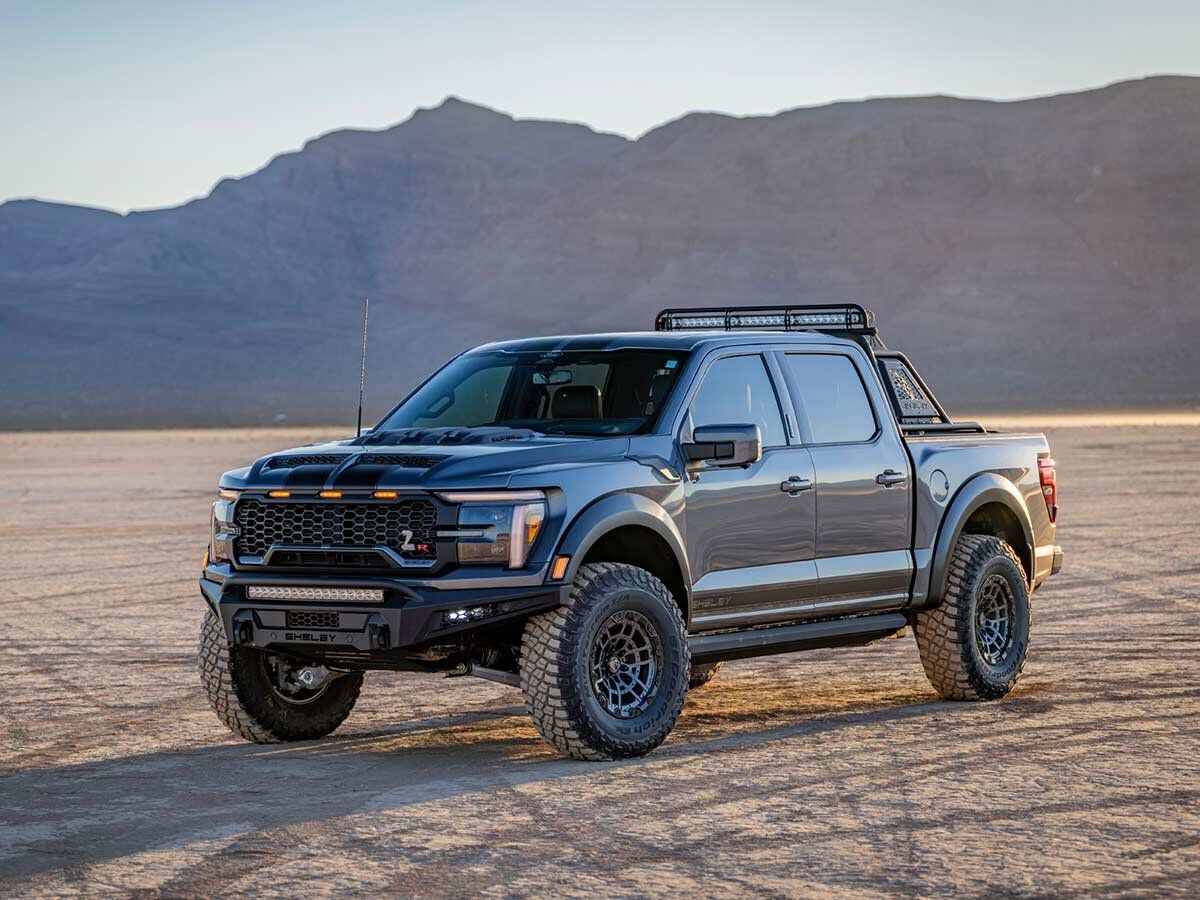
1. 2015–2021 Ford F-150 (Ecoboost Models)
The 2015 to 2021 Ford F-150 equipped with the Ecoboost engine is a powerhouse of modern technology and performance, but that complexity often translates to longer repair times. These trucks feature turbocharged direct injection V6 engines paired with extensive electronics, advanced emission controls, and an intricate fuel delivery system.
While the Ecoboost engine delivers impressive power and fuel efficiency, many repairs involve multiple systems that must be carefully handled, often requiring special tools, diagnostic equipment, and a thorough teardown. Unlike older F-150s, many jobs can’t be tackled in a single afternoon — often stretching into a full week in the shop, especially for engine or transmission repairs.
A typical week-long project for an Ecoboost F-150 might include replacing a failed turbocharger, which involves draining fluids, removing the exhaust manifold, disconnecting sensors, and carefully reassembling with precision torque specs to avoid leaks. The turbo’s location near the firewall and tight engine bay packaging complicate access.
Additionally, cooling system repairs, like radiator replacements or thermostat swaps, are not as straightforward as earlier models due to the hybrid coolant routing for both engine and turbo components. If the truck experiences issues like timing chain stretch or injector failures, addressing those problems requires considerable engine disassembly and time-consuming diagnostics.
The electronic systems in these trucks add another layer of complexity. The engine control module (ECM) coordinates numerous sensors related to turbo boost, fuel injection, variable valve timing, and emission controls. A technician must navigate Ford’s proprietary diagnostic software and sometimes perform module reflashes after mechanical repairs to ensure proper operation.
This integration demands a highly skilled mechanic and diagnostic equipment often unavailable to DIYers. The multitude of vacuum lines, electronic connectors, and sensors also increases the chance of accidental damage during repairs, necessitating careful handling and extra time to test and confirm proper function post-repair.
Lastly, the aftermarket community for Ecoboost F-150s, while growing, is still less mature than for naturally aspirated V8s, meaning that OEM parts are often the only reliable option and can be expensive or slow to arrive. This lack of readily available parts combined with the truck’s technological complexity means that repairs are generally left to professional shops equipped for extended diagnostic and repair sessions.
The result? A typical major repair or performance upgrade on an Ecoboost-equipped F-150 is more likely to take a full week in the shop rather than a quick weekend job.
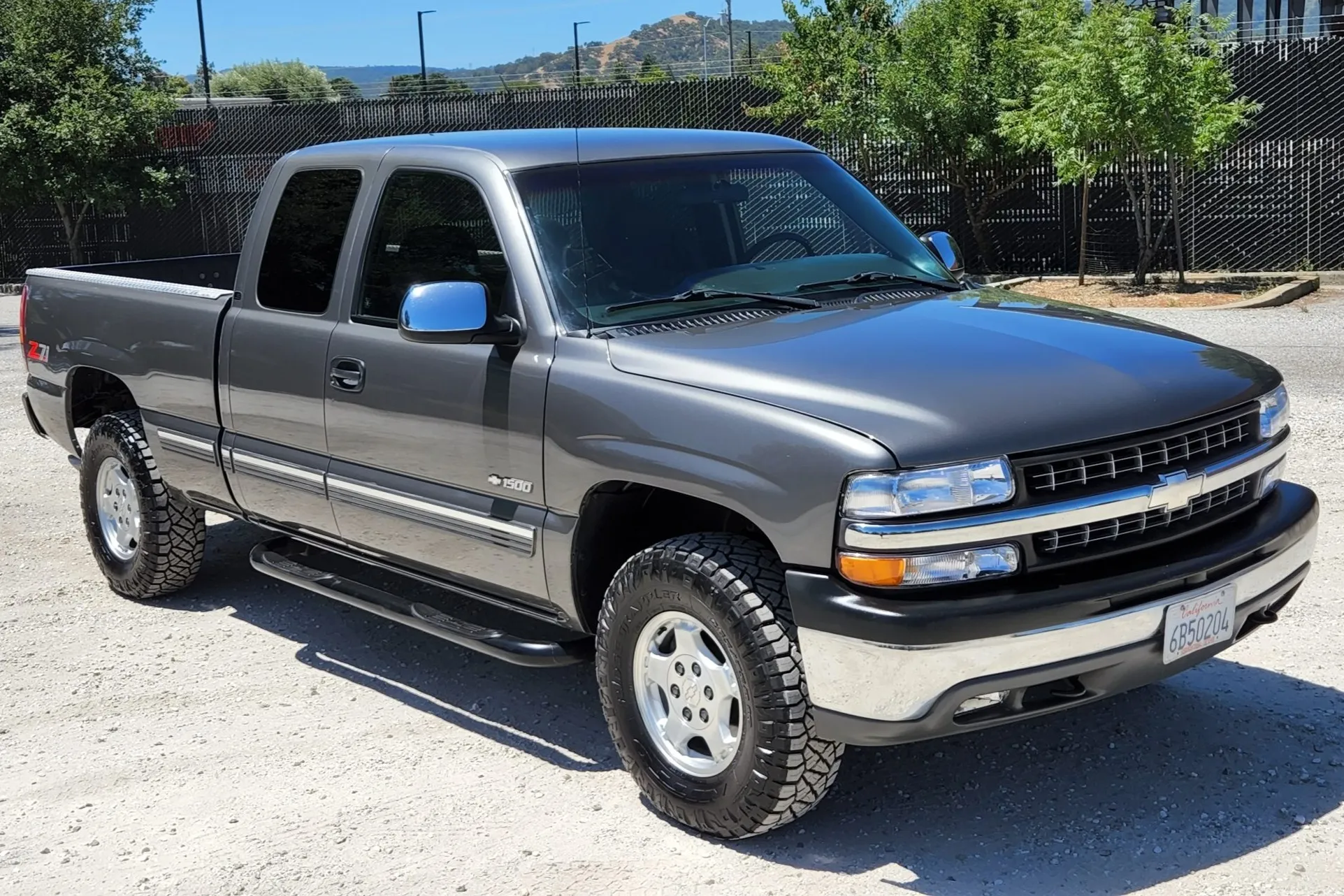
2. 2007–2013 Chevrolet Silverado/GMC Sierra 1500 (V8 Models)
The 2007 to 2013 Chevrolet Silverado and its sibling, the GMC Sierra 1500, introduced a more complex generation of trucks with updated powertrains, advanced electronics, and new emission systems that raise the repair difficulty substantially compared to earlier models.
The V8 engines — including the 4.8L, 5.3L, and 6.0L variants — incorporated active fuel management and variable valve timing, technologies that increased fuel efficiency but also added layers of complexity. Fixing or upgrading these systems often requires an extended shop stay, especially when dealing with intake manifold failures, lifter problems, or advanced ignition system repairs.
One of the most common time-consuming repairs on these trucks involves the intake manifold gasket, especially on the 5.3L engines, which can develop coolant leaks into the intake manifold. Repairing this means a major teardown of the upper engine components, including removal of the throttle body, fuel rails, and intake manifold itself.
Because the intake manifold also houses the electronic throttle body and numerous sensors, every step must be performed with care and precision. The job is known for being labor-intensive and requires multiple gasket replacements and careful reassembly to avoid leaks or vacuum issues, often extending into several days.
In addition to mechanical challenges, these Silverados introduced more complex emissions control components such as EGR valves, variable valve timing solenoids, and secondary air injection systems. Diagnosing issues with these systems typically requires OEM-level scan tools to interpret stored codes and perform module resets.
Replacing components like the fuel pump, catalytic converters, or transmission control modules also demands intricate work. These trucks also feature an integrated chassis control system that links ABS, traction control, and suspension settings, complicating brake and suspension repairs that might otherwise be quick on simpler trucks.
Finally, due to the popularity of these trucks in heavy-duty and fleet applications, many examples seen in repair shops have high mileage and extensive wear, further complicating diagnosis and repair. Rust and corrosion often exacerbate labor times, especially on exhaust and suspension components.
The high demand for precision in reassembly and testing often extends repair windows into full weeks, particularly if unexpected issues crop up during teardown. Parts costs, especially OEM gaskets, fuel pumps, or sensors, can also be high, reinforcing the necessity of leaving these trucks to professional shops for complex projects.
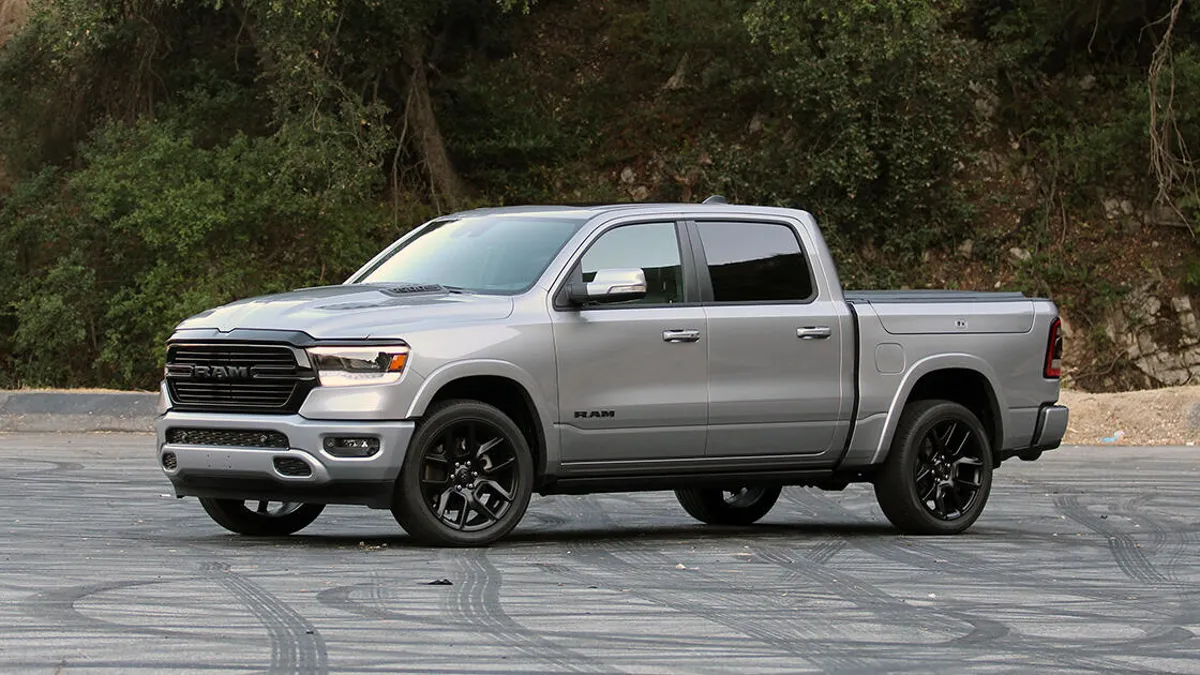
3. 2014–2018 Ram 1500 (5.7L Hemi and EcoDiesel Models)
The 2014 to 2018 Ram 1500 presents a marked jump in complexity compared to earlier generations, especially with the introduction of EcoDiesel engines alongside the well-known 5.7L Hemi V8. While the Hemi remains a popular engine for weekend repairs in earlier models, the 2014–2018 Ram incorporates numerous technological advancements that necessitate extended shop time for many repairs.
The EcoDiesel variant, in particular, is infamous for its complex emissions equipment, high-pressure fuel systems, and intricate electronic modules that require expert diagnosis and extensive teardown.
A common week-long project on this generation of Ram involves repairing or replacing the EcoDiesel’s high-pressure fuel system components, including injectors and fuel pumps. These components operate under extreme pressure and require specialized tools and procedures for safe removal and installation.
The engine control systems integrate closely with emission sensors and regeneration cycles for the diesel particulate filter (DPF), so any failure triggers complex diagnostic routines and multiple system resets that can’t be handled with basic OBD2 scanners. Additionally, many diesel repairs require the truck to remain in the shop for regeneration and calibration cycles post-repair.
Even on the Hemi V8 models, the increased integration of systems such as the TIPM (Totally Integrated Power Module), variable valve timing, and advanced transmission controls means more time-consuming electrical diagnostics and part replacements. Replacing ignition coils, for instance, now requires unplugging numerous harnesses and sometimes removing engine covers or air intake components.
Suspension and brake repairs are also more involved due to upgraded electronically assisted systems and more tightly packed engine bays. The added electronic complexity means troubleshooting intermittent faults or sensor failures often demands prolonged diagnostic sessions.
Moreover, the 2014–2018 Ram’s modern infotainment and driver assistance features add a layer of complexity that doesn’t exist in older trucks. Electrical gremlins affecting sensors, backup cameras, or module communication can complicate seemingly simple mechanical jobs.
The sophisticated architecture means unplugging or replacing components often requires recalibration and software updates only available at dealerships or well-equipped shops. Combined with the weight and complexity of these pickups, this results in many repairs that span several days or even a full week, making the 2014–2018 Ram a far cry from the quick weekend project trucks of past generations.

4. 2016–2021 Toyota Tacoma (Third Generation)
While the Toyota Tacoma is widely regarded as a reliable and easy-to-maintain truck, the third-generation models from 2016 to 2021 introduced some refinements and electronics that lengthen repair times for more significant issues.
This generation, while still simpler than some competitors, incorporates advanced emission controls, electronically controlled components, and more compact engine bays that make major repairs more time-consuming. Tasks that might have taken a weekend on earlier Tacomas can stretch into multiple days due to tighter packaging and increased system integration.
One frequent major repair requiring extended shop time on these Tacomas involves the replacement of the timing chain and associated tensioners. While the 4.0L V6 engine remains robust, the timing chain assembly is located deep within the engine, requiring removal of accessories, engine covers, and sometimes the intake manifold.
Precision in timing alignment is critical, meaning the engine must be carefully disassembled and reassembled to avoid catastrophic failures. This job generally cannot be completed in a single weekend, as it requires patience, proper tooling, and multiple verification steps during reassembly.
In addition to engine internals, repairs involving the Tacoma’s electronically controlled transmission or transfer case can be drawn out. Diagnostics for shifting problems or torque converter issues require specialized scan tools and often demand software updates or module resets that lengthen shop time.
Suspension repairs on TRD off-road variants, which often have electronically controlled shock absorbers, add complexity to what would otherwise be simple bolt-on jobs. Even routine brake jobs sometimes require extended diagnostics to ensure the truck’s integrated ABS and traction systems are functioning properly after repairs.
Furthermore, although the aftermarket support for this Tacoma generation is growing, the availability of parts remains less widespread than for earlier models, especially for specialized TRD components. Many parts must be ordered OEM, lengthening wait times and repair durations.
Combined with the increasingly compact and integrated nature of the truck’s design, these factors contribute to a longer-than-typical repair process. As a result, owners and mechanics often prepare for a week or more in the shop when addressing major mechanical or electronic issues on the 2016–2021 Tacoma.
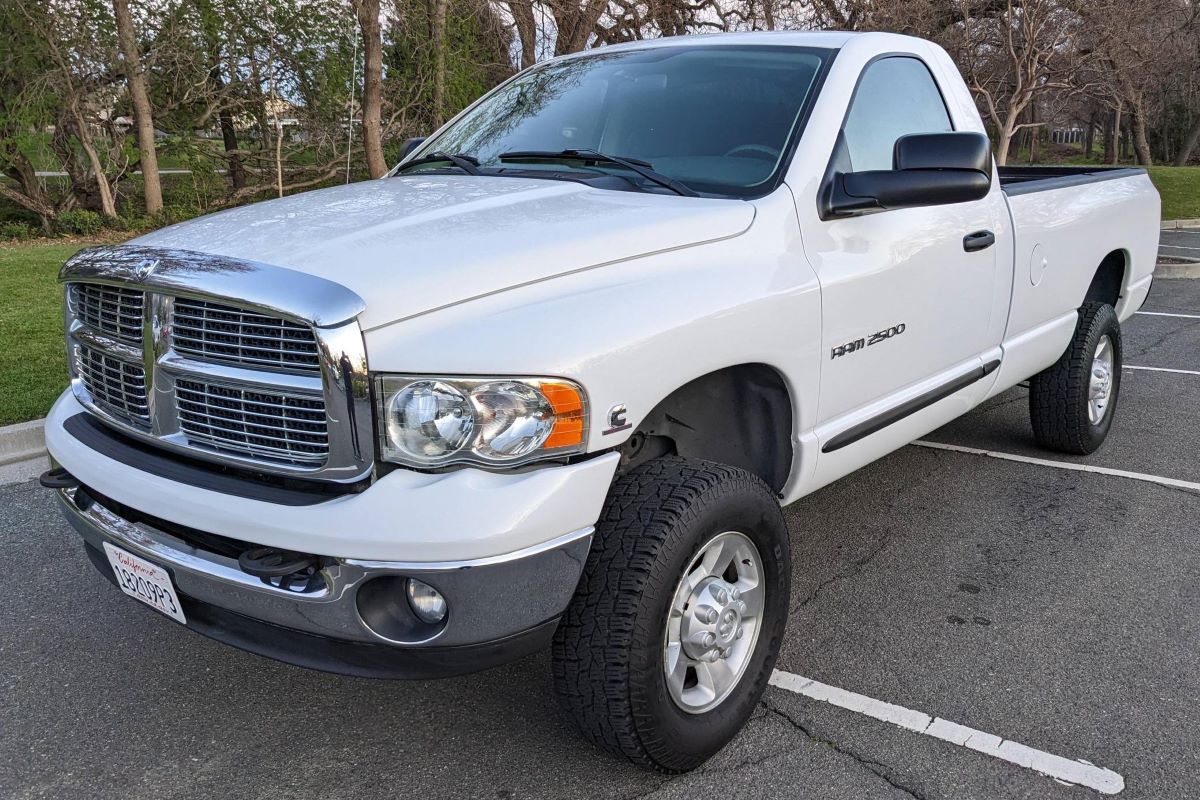
5. 2001–2007 Dodge Ram 2500/3500 Cummins Diesel
The 2001 to 2007 Dodge Ram 2500 and 3500 heavy-duty trucks equipped with the 5.9L Cummins diesel engine are iconic in the diesel pickup world but demand significant time and effort for major repairs and rebuilds.
While the Cummins engine is legendary for durability and simplicity relative to modern diesels, its large size, weight, and heavy-duty components make shop time-intensive, especially for engine rebuilds or fuel system overhauls. Many common projects on these trucks are not suited for quick weekend work due to the sheer scale of the components and the physical labor involved.
One of the most time-consuming projects on these Rams is a full engine overhaul or head gasket replacement, especially as these trucks age and accumulate high mileage. The inline-six Cummins engine sits deep in the engine bay and is coupled with heavy-duty turbochargers, intercoolers, and exhaust components that must be carefully removed before accessing the engine block.
Due to the engine’s industrial-grade construction and large cast iron components, disassembly and reassembly require a hoist, engine stands, and multiple days of careful work, often extending beyond a typical workweek.
Fuel system repairs, including injector replacements and fuel pump servicing, also take longer than usual due to the high-pressure systems used on these diesel trucks. Diesel injectors must be calibrated precisely, and many repairs require specialized diagnostic and calibration tools to avoid engine damage.
Turbocharger replacements similarly demand several days because of the heavy, hard-to-access components and the need to carefully bleed and inspect all related systems to avoid leaks or failure. Moreover, many of these trucks have manual transmissions and dual rear wheels, adding complexity to drivetrain repairs.
Finally, while the Cummins community is vast and knowledgeable, the parts for these heavy-duty engines and trucks are often expensive and may need to be sourced from specialty suppliers. The combination of large mechanical components, heavy labor requirements, and the precision needed for diesel fuel and emission systems means many projects require full-week shop stays.
This truck is ideal for those who want serious diesel power but are prepared for the longer, more involved repair and maintenance cycles that come with it.
Also Read: Top 10 Most Reliable Used Cars You Can Buy for Under $10,000 in 2025
Navigating the world of pickup trucks through the lens of repairability and project time commitment reveals a wide spectrum of mechanical complexity and owner involvement. For many enthusiasts and practical owners alike, one of the most rewarding aspects of owning a pickup is the ability to perform meaningful maintenance, repairs, and upgrades with their own hands.
Yet, not all pickups are created equal when it comes to ease of access, mechanical simplicity, and the availability of resources for DIY work. Understanding which trucks are best suited for quick weekend projects and which require longer, dedicated shop time is vital to making informed ownership decisions and setting realistic expectations for repair endeavors.
Our exploration of pickups with the fastest weekend projects highlights a distinct set of trucks designed around straightforward mechanical systems, accessible engine bays, and proven durability. Trucks like the 1999–2006 Chevrolet Silverado 1500 and the 1994–2004 Ford F-150 embrace an era of design where simplicity was a priority, making them perennial favorites among DIY mechanics.
These trucks offer owners the satisfaction of replacing ignition components, brakes, suspension parts, and minor engine repairs within a single weekend — a huge advantage for those who want to minimize downtime and labor costs. The Toyota Tacoma from the mid-2000s and early 2010s exemplifies a blend of bulletproof reliability and thoughtful engineering, making it another favorite for fast-turnaround maintenance and upgrades.
Similarly, the mid-2000s Dodge Ram 1500 Hemi models and the 2010–2014 Ford F-150 Coyote offer a relatively modern twist on serviceability without sacrificing the ease of weekend wrenching. Conversely, the pickups that demand a week or more in the shop illustrate how the march of technology and emissions regulations has made repairs more involved.
The 2015–2021 Ford F-150 Ecoboost models, with their turbocharged, direct-injection V6 engines and extensive electronic controls, require specialized diagnostic tools, careful disassembly, and often prolonged calibration processes. Modern Chevrolet Silverados and GMC Sierras from the late 2000s and early 2010s combine variable valve timing and active fuel management systems with tighter engine bays, extending the labor time on projects such as intake manifold gasket replacements or fuel system repairs.
The mid-2010s Ram 1500s with EcoDiesel engines are emblematic of the complexity diesel powertrains add, with high-pressure fuel systems and emission control equipment necessitating expert intervention. Even the otherwise reliable third-generation Toyota Tacoma demands more time in the shop due to tighter packaging and electronic integration, while heavy-duty Dodge Ram Cummins diesels require extensive labor for engine rebuilds and fuel system servicing due to their size and rugged construction.
This contrast between trucks highlights an important lesson for potential owners and DIY mechanics: the tradeoff between modern technology and ease of maintenance. While modern pickups often deliver improved performance, fuel efficiency, and driver assistance features, they generally come with a price — more complicated repairs that require specialized knowledge and equipment.
Older trucks or those engineered with simplicity in mind offer a different kind of value, rewarding owners with quicker, less expensive projects that can often be done with hand tools in a home garage. Ultimately, choosing the right pickup for your needs depends on your mechanical skill level, willingness to invest time, access to tools, and the type of projects you want to undertake.
If you crave the satisfaction of fast weekend wrenching and the ability to quickly get back on the road, trucks like the earlier Silverados, F-150s, and Tacomas should top your list. If you’re ready to tackle more sophisticated challenges or want the latest technology and power, be prepared to commit to longer shop stays with trucks like the Ecoboost F-150 or EcoDiesel Ram 1500.
Regardless of your choice, pickups remain some of the most engaging and rewarding vehicles to own and work on. Their blend of utility, performance, and hands-on serviceability continues to attract a passionate community of enthusiasts who value not only what these trucks do on the road but also the deep connection forged by turning wrenches and upgrading their machines.
Whether a quick weekend brake job or a full week-long engine rebuild, the journey of pickup ownership is as much about the process as it is about the destination — and knowing your truck’s repair style is the first step toward making that journey a successful and enjoyable one.

